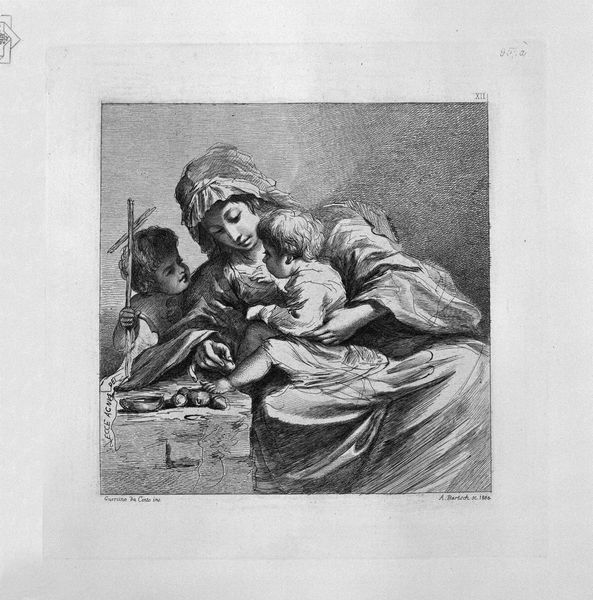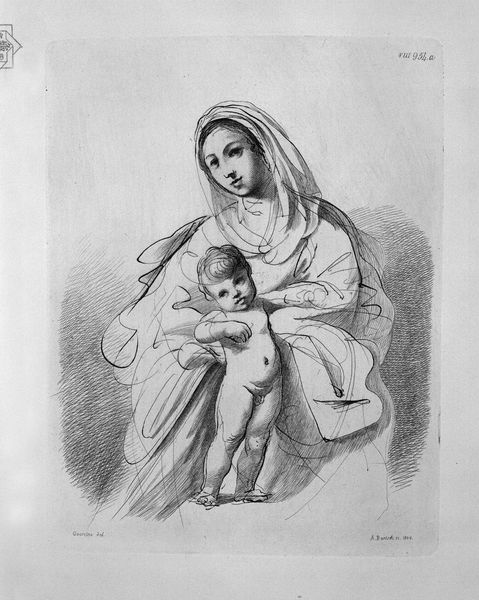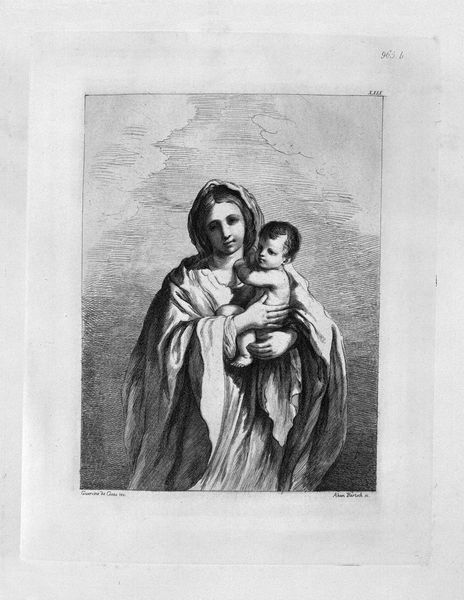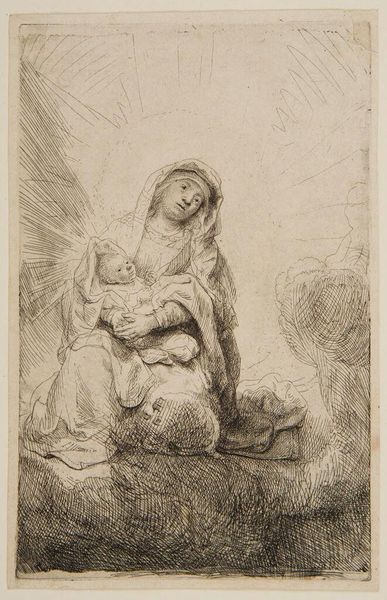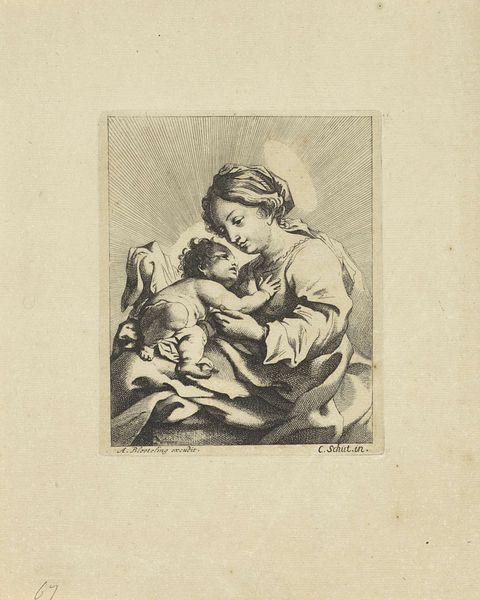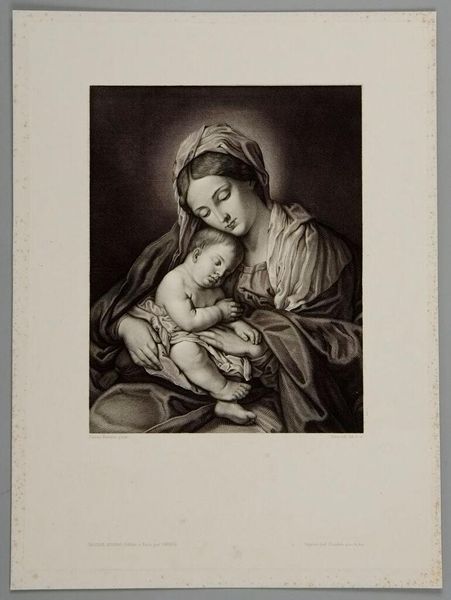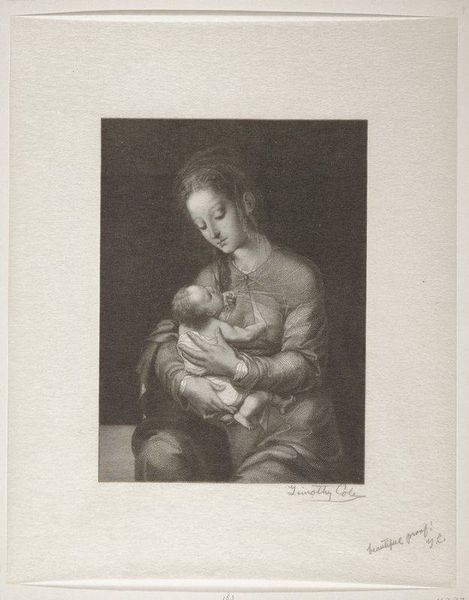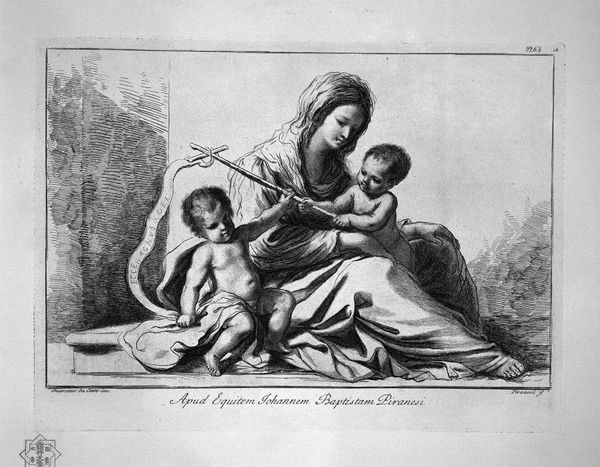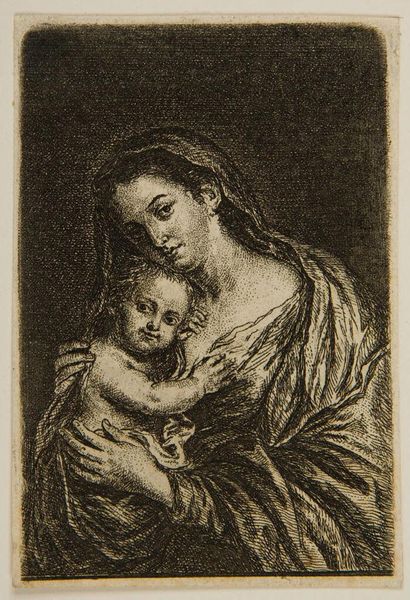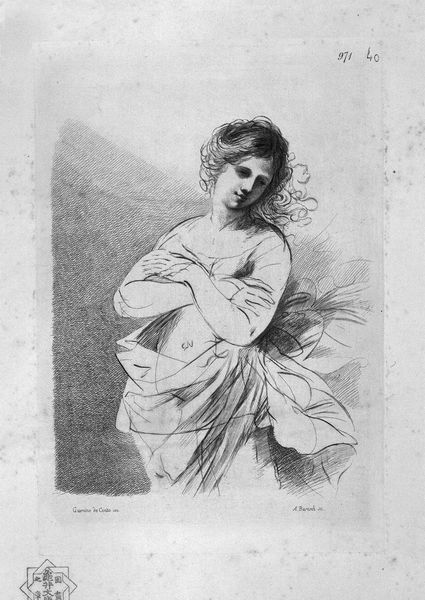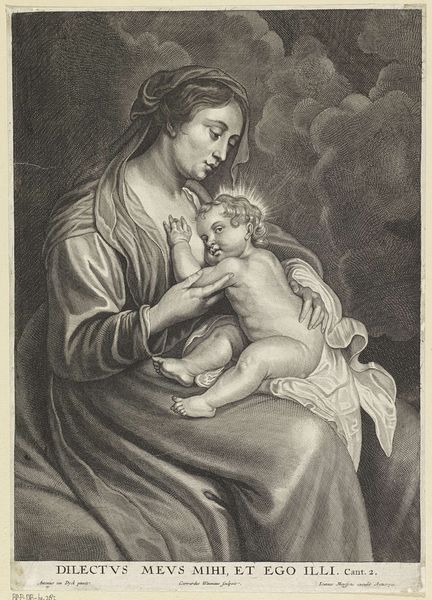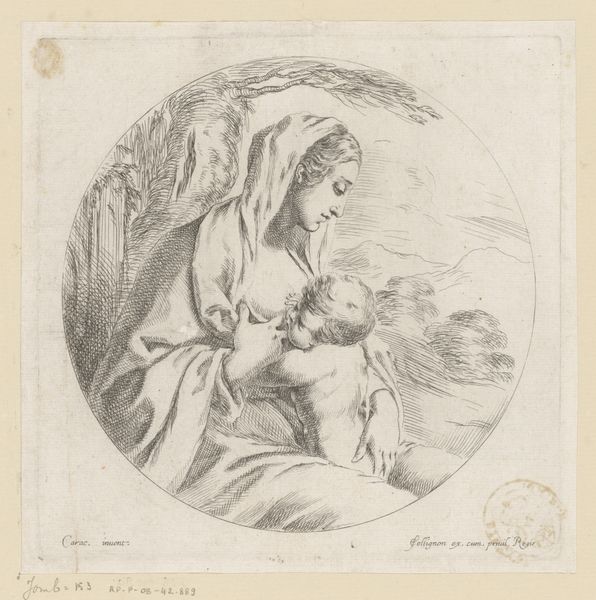
drawing, ink, engraving
#
portrait
#
drawing
#
narrative-art
#
baroque
#
charcoal drawing
#
mannerism
#
figuration
#
ink
#
engraving
#
miniature
Copyright: Public domain
Giovanni Battista Piranesi made this etching, "The Virgin and Child in half-figure in her arms," after Guercino. As an etching, this artwork begins with a metal plate, likely copper. Piranesi would have coated the plate with a waxy, acid-resistant ground, and then used a sharp needle to draw his composition, exposing the metal beneath. The plate was then submerged in acid, which bit into the exposed lines, creating grooves. Ink was applied to these grooves, the surface wiped clean, and the image transferred to paper under high pressure in a printing press. The resulting lines of the artwork, with their varying depths and intensities, highlight the tactile qualities inherent in etching. Piranesi uses this to great effect, mimicking the texture of fabric and skin, and conveying the weight and form of the figures. Considering the labor involved, from the preparation of the plate to the printing process, it’s clear that printmaking in Piranesi's time was a skilled craft, demanding both artistic vision and technical expertise. In elevating this process, Piranesi challenges us to rethink traditional hierarchies between fine art and craft.
Comments
No comments
Be the first to comment and join the conversation on the ultimate creative platform.

